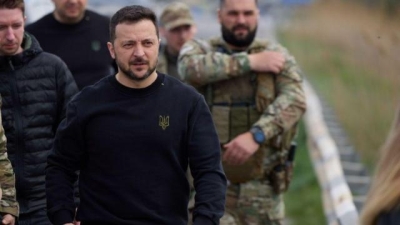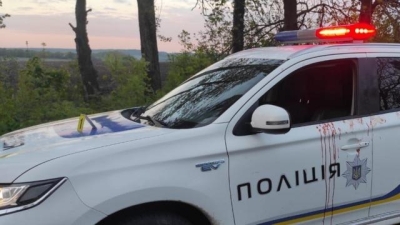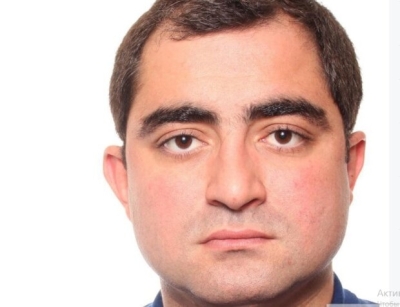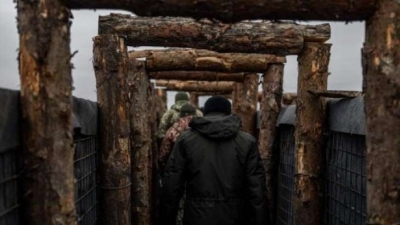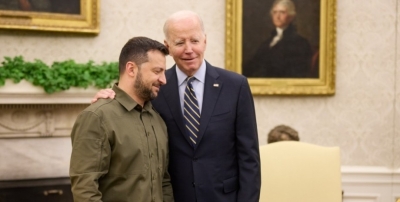Russian Defense Ministry reshuffles, Moscow prepares for Ukrainian UAVs on Red Square on May 9. What happened on the front line on April 27?
Читать на русском языке
In today’s summary :
- In Bakhmut, the Wagner Group has allegedly managed to reach the main entrance to the city, blocking one of the Ukrainian army’s logistics routes;
- British intelligence reports on firing positions set up by Russians at the Zaporizhzhia Nuclear Power Plant (NPP);
- The Ukrainian Defense Ministry estimates the number of Russian troops deployed in the combat zone;
- Russian troops strike Mykolaiv, one person killed and 23 wounded;
- Deputy head of Russian-appointed “Department of Internal Affairs” in Melitopol killed in explosion;
- Russian kamikaze drones reported to have likely hit a Gepard self-propelled anti-aircraft launcher for the first time;
- The Pentagon estimates that Ukraine has received 98% of the weapons and military equipment promised by its Western allies;
- The Russian Defense Ministry is undergoing a major reshuffle, with Mikhail Mizintsev, the “Mariupol butcher,” leaving his post as deputy minister for logistics;
- Moscow prepares for the possible arrival of Ukrainian UAVs at the May 9 parade on Red Square.
The front line
Yevgeny Prigozhin, founder of the Wagner PMC, claims he had ordered a ceasefire in Bakhmut as he awaits the arrival of American journalists.
“There’s information that ‘Cerberus’ (“Tserber”), the commander of the AFU’s 57th brigade, is taking American journalists to Bakhmut. A decision was made to suspend artillery fire so that the American journalists could quietly film Bakhmut and go home,” he says in an audio recording released by his press service. Prigozhin later dismissed his statement as a joke, calling it “military humor.”
According to Russian “war correspondent” Semyon Pegov’s project WarGonzo, the Wagner Private Military Company (PMC) continues to storm the southern, western and northern districts of Bakhmut. Wagner mercenaries have allegedly managed to reach the intersection of Tchaikovsky and Yuvileina Streets, which is the entrance to the city, both from the side of Ivanivske and Khromove. This indicates that, according to Pegov’s information, one of the logistics routes of the Armed Forces of Ukraine (AFU) has been blocked.
Russian pro-war channels have reported on troop movements in the Kherson direction. Ukrainian troops are claimed to be actively moving in small groups on the islands in the Dnipro river delta. Currently, the entire territory of the islands on the right bank of the Netrebka River is occupied by the AFU, meaning the river can practically be designated as the front line.
In its daily summary, British military intelligence reported that Russian “sandbag fighting positions” have been constructed directly on the roofs of the reactor halls of the Zaporizhzhia Nuclear Power Plant (ZNPP). “This is the first indication of the actual reactor buildings being integrated in tactical defense planning,” the report notes. Russia is likely preparing these positions in anticipation of the Ukrainian counteroffensive.

Placing defensive positions at the ZNPP could result in damage to the facility’s security systems during combat operations. However, as noted by British military intelligence, it is unlikely that the reactors would suffer catastrophic damage from infantry weapons, since the structures in which they are located are very well fortified.
The Ukrainian Defense Ministry estimates that there are currently 48 brigades, 122 regiments and 315 “formations” of Russian forces totaling 369,000 men with 5,900 heavy weapons in the combat zone.
Shelling
Russian forces launched a rocket attack on Mykolaiv. Preliminary reports have claimed four Kalibr missiles were fired at the city, killing one person and wounding 23. Ukrainian President Volodymyr Zelensky published a video of the consequences of the shelling. Mayor Oleksandr Senkevich commented that Mykolaiv’s residents hadn’t seen such shelling since the New Year, and claimed that there were no military facilities in the area of the strike.
Residents of Russia’s St. Petersburg and the surrounding Leningrad region – in particular, the towns of Pushkin and Pavlovsk – reported explosions on the night of April 27. Later, a crater six meters in diameter and 1.5 meters deep was found near an abandoned power plant in Pavlovsk. The explosion also damaged buildings at a local equestrian club. Russia’s Investigative Committee announced that a criminal case was launched over the illegal trafficking of explosives following the incident. What exactly caused the detonation is currently unknown. Video surveillance cameras recorded the sound of an explosion, with subscribers of local media outlet Fontanka claiming that the recording was made by a camera on a private home in the Gatchina district.
On the night of April 27, Ukrainian drones allegedly tried to attack the Kursk nuclear power plant in the town of Kurchatov. According to a report by Mash, Russian air defense systems were triggered and an alarm went off in the Bryansk region. According to these reports, the attack was carried out using a UAV launched from the territory of the Sumy region of Ukraine. The information has not been confirmed, and no casualties or damage were reported.
In occupied Melitopol, Alexander Mischenko, an employee of the local “Russian police force” died as a result of a bomb attack. The Russian Investigative Committee’s Telegram channel reported that a criminal case has been opened over Mischenko’s assassination.

An improvised explosive device exploded on April 27 near the entrance of a residential building on Melitopol’s Kirov Street. Mishchenko, who was deputy head of Melitopol’s Russia-installed “Department of Internal Affairs,” died of his injuries. Another police officer was also injured, the report said.
Details of a new Ukrainian strike on an oil depot in the city of Rovenky in the Luhansk region have emerged. According to the “authorities” of the so-called “LPR,” on the night of April 27, the Ukrainian armed forces struck the oil depot using seven Mugin-5 Pro type drones, of which five were shot down and two detonated on the territory of the oil depot. Administrative and technical buildings were damaged as a result of the shelling.
A video of one of the drones used in the attack was posted on Telegram by Russian “war correspondents.”
Russian pro-war channels reported that five children were injured in Donetsk as a result of a land mine explosion. One child lost a leg and is in serious condition, the reports said. However, they noted that the children could have been injured not as a result of an anti-personnel mine, but as a result of a projectile dropped from a UAV. An investigation is underway at the site of the incident.
Losses
Pro-Russian Telegram channels are circulating a video of a Lancet kamikaze drone striking a Ukrainian Tor air defense system launcher in the Kherson region.
The Lancets also reportedly destroyed four S-300 launchers and a Gepard self-propelled air defense system near Kherson. Regarding the latter incident, a screenshot has been published with what is claimed to be a still image taken a few seconds before the kamikaze drone impacted the Gepard.
A video of Russian UAVs “hunting” Ukrainian air defenses has also appeared in Telegram channels, showing an anti-aircraft missile being hit by a Russian Lancet drone. Notably, there is no detonation on impact, indicating that the AFU is likely using malfunctioning surface-to-air missiles (SAMs) as decoys close to the front line.
Russian “war correspondent” Alexander Sladkov published footage of a Ukrainian 36D6 radar station being hit by drones in his Telegram channel.
Meanwhile, Ukrainian Telegram channels have published footage of the alleged destruction of a Russian S-300PS surface-to-air missile launcher as a result of Ukrainian artillery fire.
Arms supplies
Ukraine has received almost all (98%) of the heavy equipment promised by the West, announced General Christopher Cavoli, commander-in-chief of US forces in Europe. Mykhailo Podolyak, adviser to the head of the Ukrainian Presidential Office, expressed doubts about the assessment.
According to NATO Secretary General Jens Stoltenberg, Ukraine’s Western allies have helped train and arm nine Ukrainian army brigades, and transferred a total of 1,550 armored vehicles and 230 tanks to Ukraine.
Ukrainian Prime Minister Denys Shmyhal announced that Skynex air defense systems had been put on combat duty.
Ukraine has unveiled the Toloka underwater torpedo. Apparently, the vehicle is created in three versions, differing in size, with the largest having a length of 4 m and rather imposing dimensions. Control and guidance is carried out through the instruments on the mast, which are located above the water surface. The torpedo’s range is claimed to vary from 400 to 1200 km (250 to 745 miles), depending on its different versions. Naval analyst H. I. Sutton calls the drone a “loitering torpedo” and notes that the underwater movement makes it difficult to detect and defeat. “Its warhead is also impacting below the waterline so [it] may be more likely to sink its target,” Sutton adds.
A video of the 37th Separate Brigade of the AFU Marines apparently deploying the Advanced Precision Kill Weapon System (APKWS), which launches Hydra 70 laser-guided missiles, has surfaced online. The first information about the future delivery of such systems to Ukraine was published last May.
Reshuffle at Russian Defense Ministry
Russian pro-war channels are reporting on reshuffles in the Russian Defense Ministry’s leadership.
Self-styled “war correspondent” Alexander Sladkov reported the dismissal of Mikhail Mizintsev, referred to as the “Butcher of Mariupol” in the Western press, from the post of Deputy Minister for Material and Technical Support. Alexei Kuzmenkov, deputy head of the Russian National Guard (Rosgvardia), has allegedly taken Mizintsev’s place.
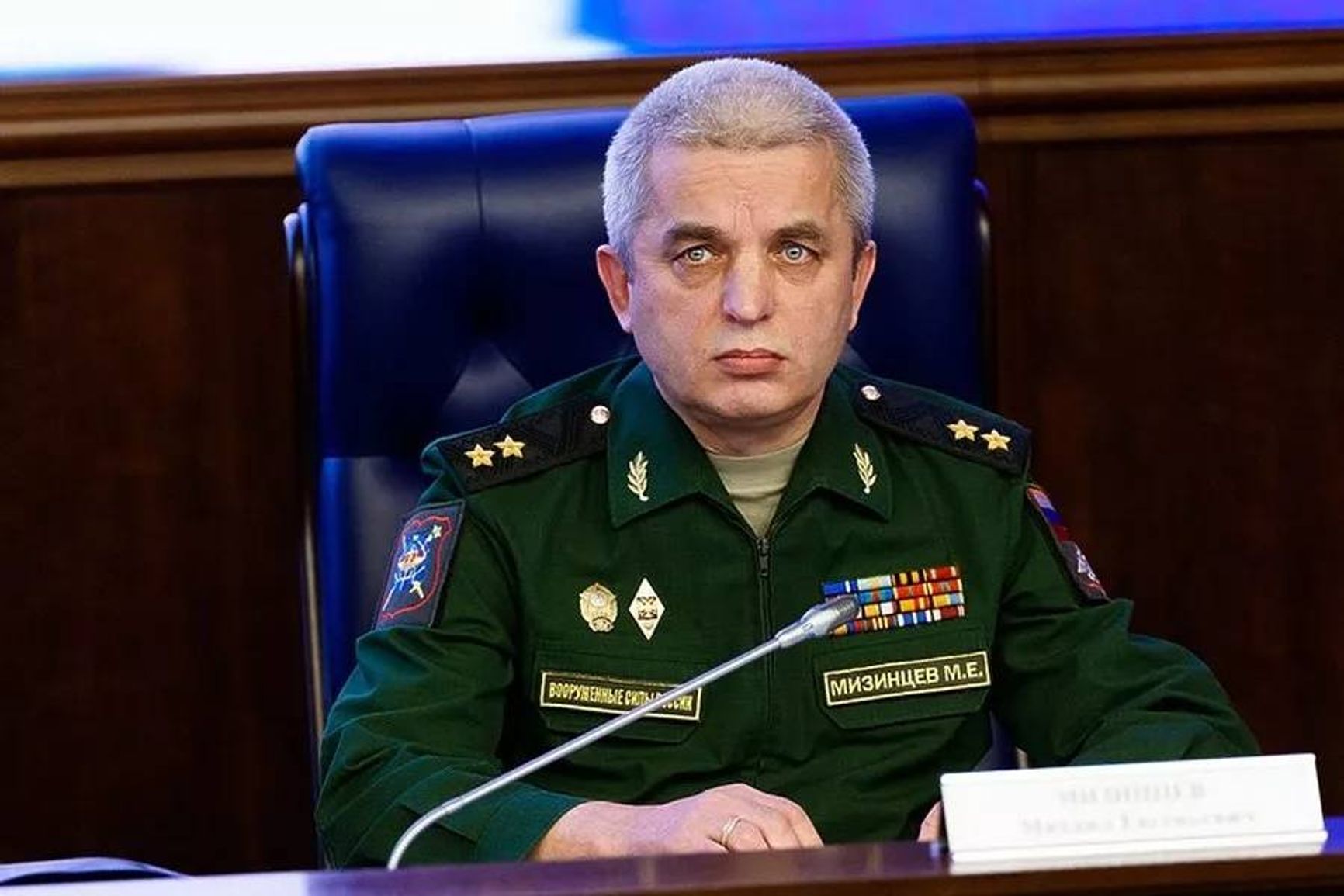
Also, according to Sladkov, Stanislav Gajimagomedov, deputy head of the Main Operative Directorate of the Russian army’s General Staff, has been named head of the National Defense Management Center instead of the recently appointed General Oleg Gorshenin.
Semyon Pegov’s WarGonzo and pro-war blogger Anastasia Kashevarova’s personal Telegram channel have written posts defending Mizintsev. WarGonzo attributed the reshuffle to Vladimir Putin’s alleged personal visit to the front line, where he listened to officers’ reports on existing issues.
“Apparently, they told him about some things, as it were. Heads were flying. But here again is the traditional Russian question – do they really tear down those responsible for the state of affairs or do they do it indiscriminately, just to keep their even higher chairs,” the post says.
The post also says that Mizintsev “did not inherit the best of legacies,” in a nod to the Russian army’s problems with the supply of military hardware and ammunition.
The well-known Russian pro-war channel Voenkor Kotenok Z argues that Mizintsev’s resignation is “the result of the active work of Commander of the Airborne Troops Teplinsky to check the combat readiness of our groups in the [special military operation] zone.”
Moscow prepares for Ukrainian UAV attack at May 9 parade
Russian media outlets have published copies of what appear to be official documents describing procedures in case of detection of UAVs during the May 9 Victory Day parade in Moscow’s Red Square. The documents contain instructions for the operators of the Silok-01 radio suppression system. Their authenticity has not yet been confirmed. In addition, the telegram channel Ostorozhno, Novosti! reported on the creation of groups of government workers who will monitor the sky in search of drones.
In early April, Ukrainian businessman Vladimir Yatsenko, one of the founders of the Ukrainian Monobank and drone manufacturer “Dovbush T10” promised to give at least 20 million Ukrainian hryvnias (over $500,000) to the person that lands a drone on Red Square in Moscow on May 9 – the site of an annual military parade commemorating the Soviet victory over Nazi Germany.
“In order to avoid misunderstandings, the wings should bear a Ukrainian slogan, such as ‘Glory to Ukraine,’ ‘Glory to the Heroes’ and so on,” Yatsenko said.
Drone attacks on military and infrastructure facilities in Russia – as well as the downing of drones in various urban locations throughout the country – have been regularly reported since the end of 2022. On April 25, reports confirmed three quadcopters with cameras and no insignia that had crashed in different areas near Moscow. One of them was found near a collapsed Ukrainian drone, which was discovered on April 23 near Noginsk.

